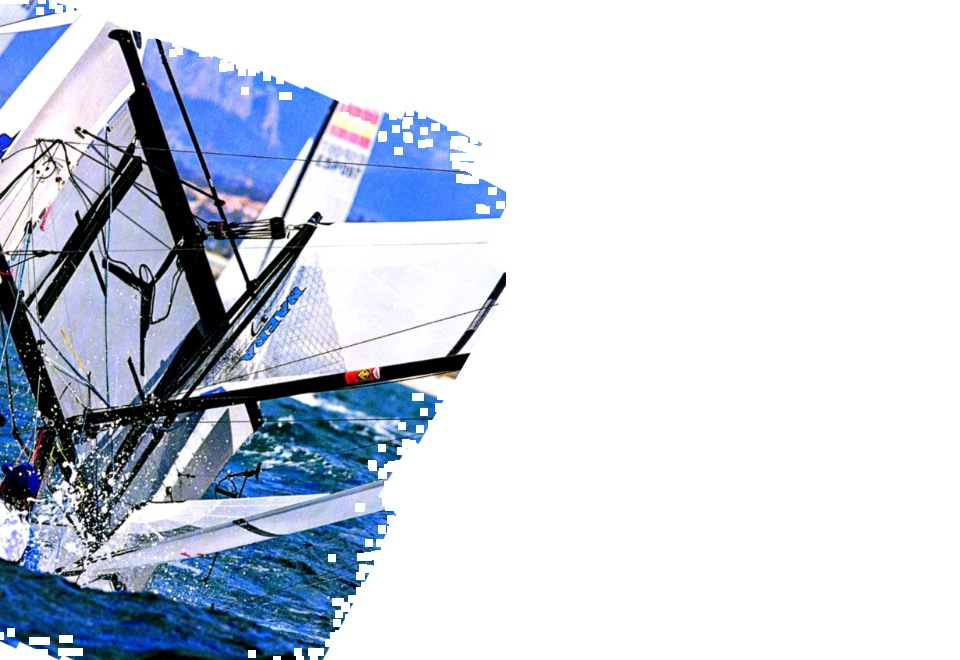Latitude, Longitude and Nautical Miles
In an emergency a Cape Breton skipper who radios his location to the Coast Guard as "Somewhere east of Louisburg" could wait a long time for help. There's a lot of ocean in the North Atlantic. Navigators use a proven and exact way of describing a boat's position, wherever that may be.
Every square on a chessboard can be identified by column and row: the white queen makes her move from the first row of the fourth column. Similarly, every point on earth can be described using co-ordinates. This has been the practice used by navigators since early times. In ancient Greece a mathematician, Hipparchus, developed a grid system with rows for lines of latitude and columns for meridians of longitude to position his home at Rhodes. The system has been refined over the years but the idea and practice remain the same.
Parallels and Meridians
The grid system of latitude and longitude consists of a network of imaginary lines encircling the earth in two directions: north-south, and east-west.
The east-west lines of latitude run parallel to each other and are appropriately called parallels of latitude. The equator is a parallel of latitude.
North and south lines of longitude aren't parallel; instead they fan out from one pole and converge to the other. Lines of longitude are called meridians of longitude.
Co-ordinates of
Latitude and Longitude
The location of any point on the earth's surface can be described using its latitude and longitude co-ordinates.
In theory there are an infinite number of parallels and meridians. For convenience they are ordered into scales made up of degrees ( ° ) and fractions of degrees.
The circumference of a sphere is divided into 360°. The distance from the equator to the north pole is one-quarter of the circumference of the world. Therefore, parallels of latitude are numbered from 0° at the equator to 90° at each pole with an N or S to designate northern or southern hemisphere.
Halfway from the equator to the north pole is the parallel of 45° N latitude - the approximate latitude of Cornwall, Ontario or Minneapolis, Minnesota.
Meridians of longitude are numbered from 0° to 180° E and from 0° to 180° W of the prime meridian, the meridian passing through Greenwich, England.
Degrees and Minutes
The distance between degrees of longitude is about 60 nautical miles at the equator. It is less further north or south as the longitude lines converge towards the poles. Degrees of latitude are always 60 nautical miles apart. At the equator, a grid of 1° of longitude by 1° of latitude covers about 3,600 square miles.
For greater precision, degrees are divided into 60 minutes ( ' ) - of distance, not time. Each minute is further divided into 60 seconds ( " ), although it's becoming common to use tenths of a minute, or decimal minutes, instead of seconds. A tenth of a minute (or tenth of a nautical mile) is about 600 feet or 185 meters. This is the level of accuracy used in this course.
Describing Co-ordinates
In maritime navigation, it’s conventional when describing co-ordinates to enter latitude first, or to place it directly above longitude. There's no need to attach the prefixes "lat" and "long" or "L" or "Lo" although you may do so. The descriptors N S, E or W indicate the co-ordinates as latitude or longitude.
For example, the Citadel in Halifax, Nova Scotia is located at 44° 38.8' N, 63° 34.8' Wusing degrees, minutes and tenths of a minute or decimal minutes.
In another format, using degrees, minutes and seconds, the position of Athens' Acropolis can be described as:
 37° 58' 12" N
37° 58' 12" N
23° 43' 30" E
The Nautical Mile
Distance on water is measured in nautical miles (NM or nm). A nautical mile is 6,076.12 feet. For most calculations, 6,000 feet is close enough. By comparison, a statute mile is 5,280 feet or about 87% of a nautical mile and a kilometre is 54%.
One minute of latitude equals one nautical mile and degrees of latitude are 60 nm apart. The distance between degrees of longitude isn't constant because they converge towards the poles.
The metric system is not normally used in the nautical world except, increasingly, for use in charted depths and elevations.
